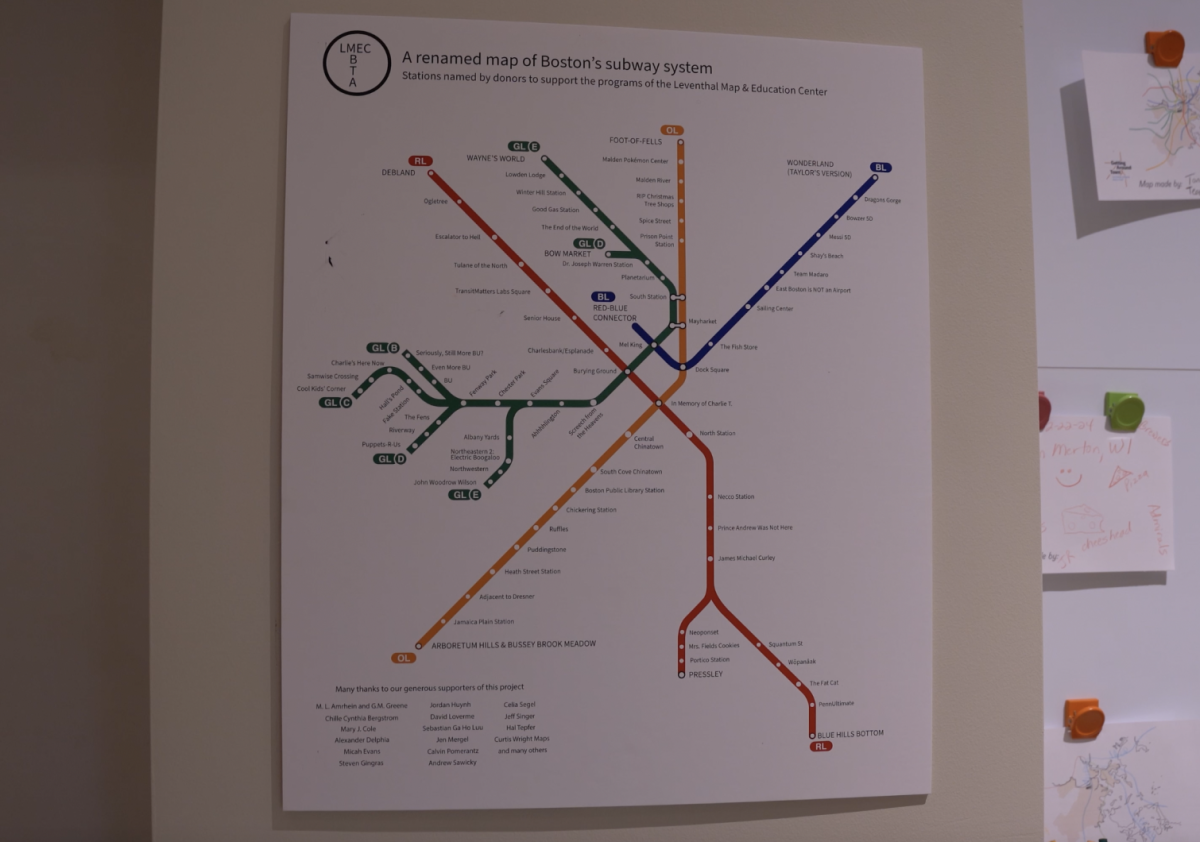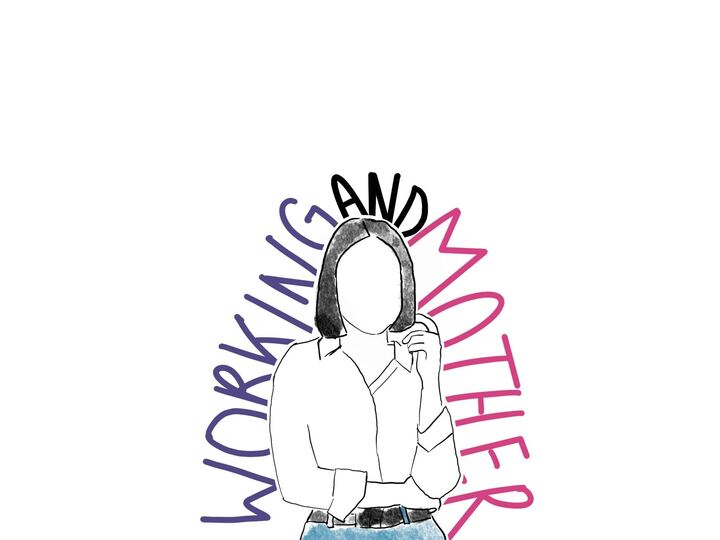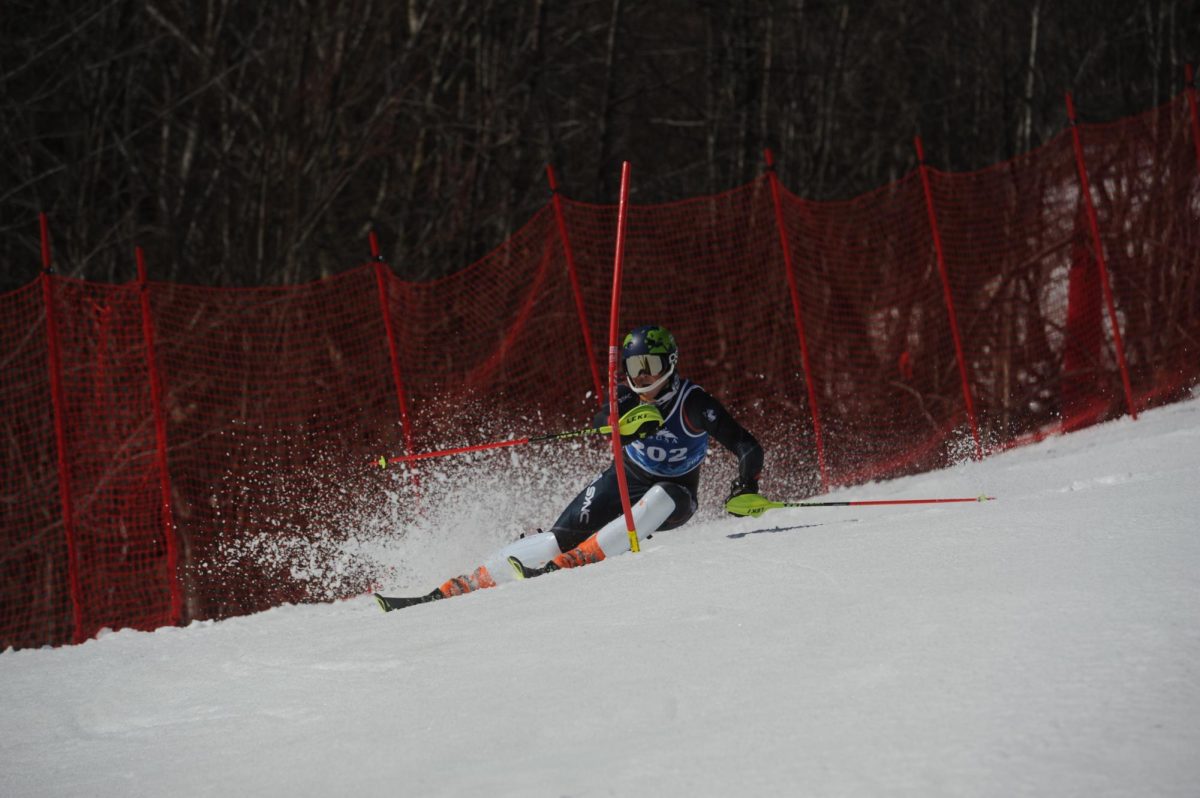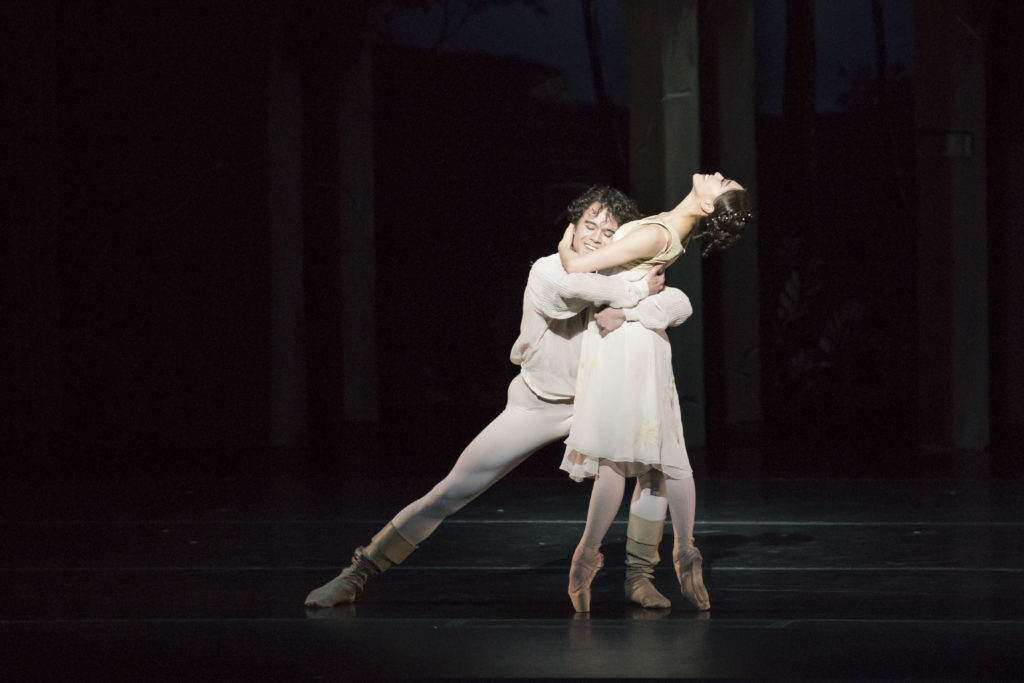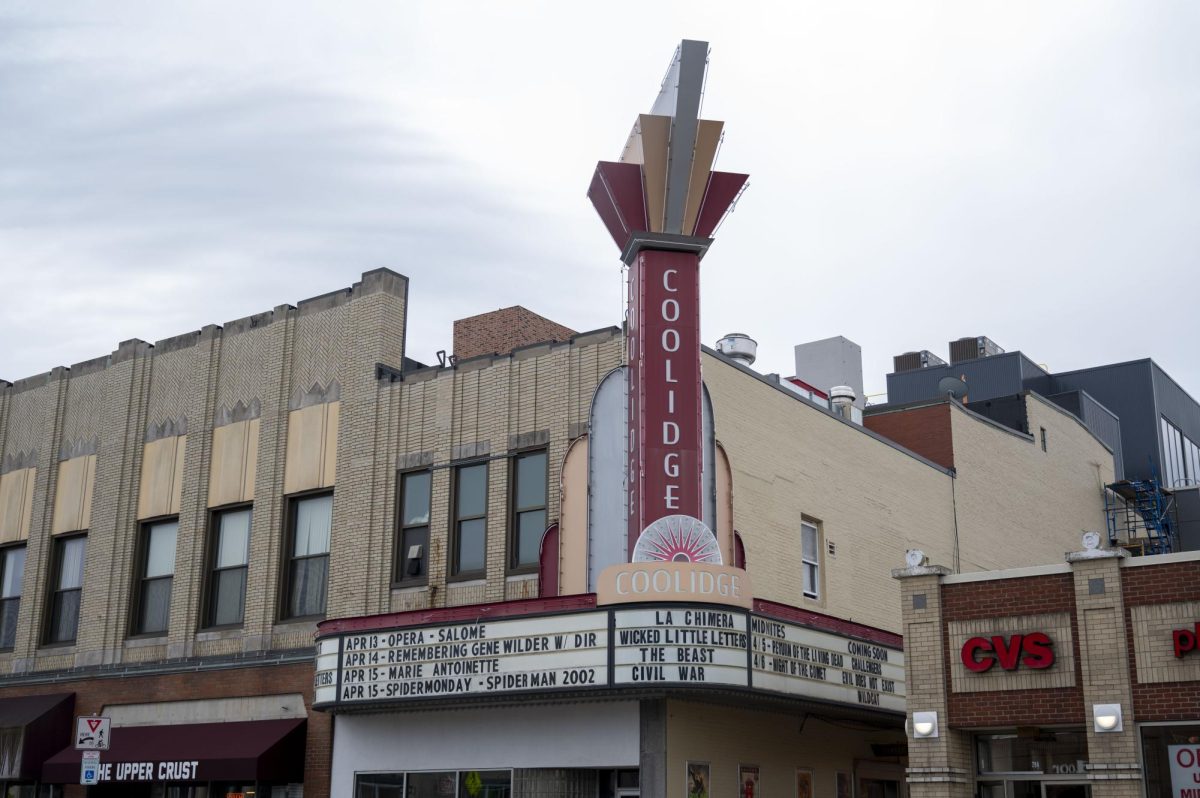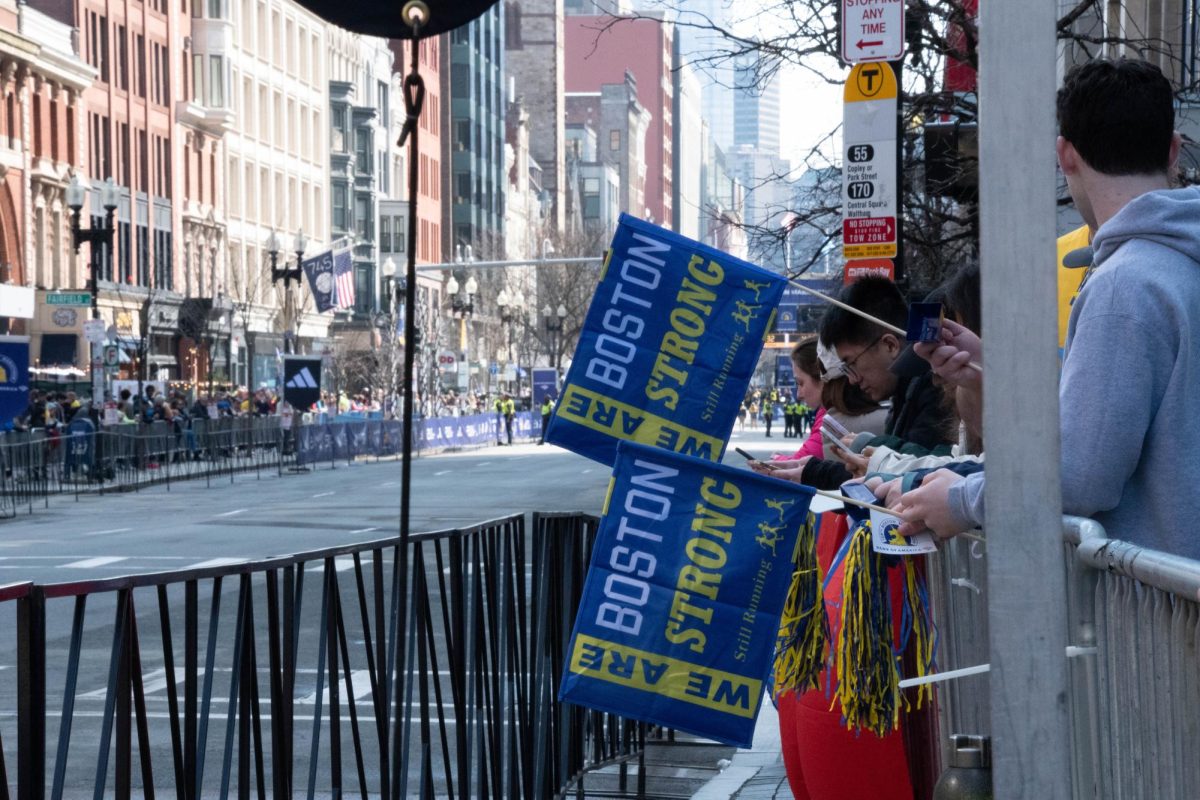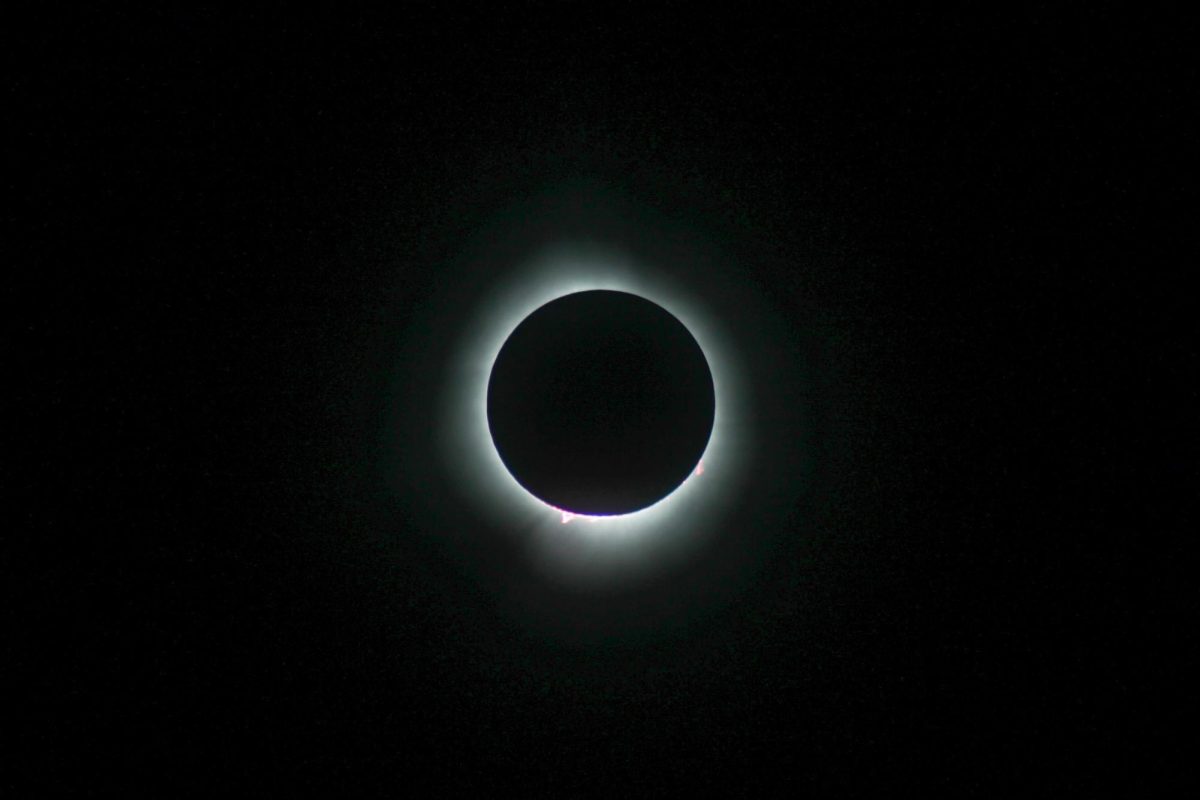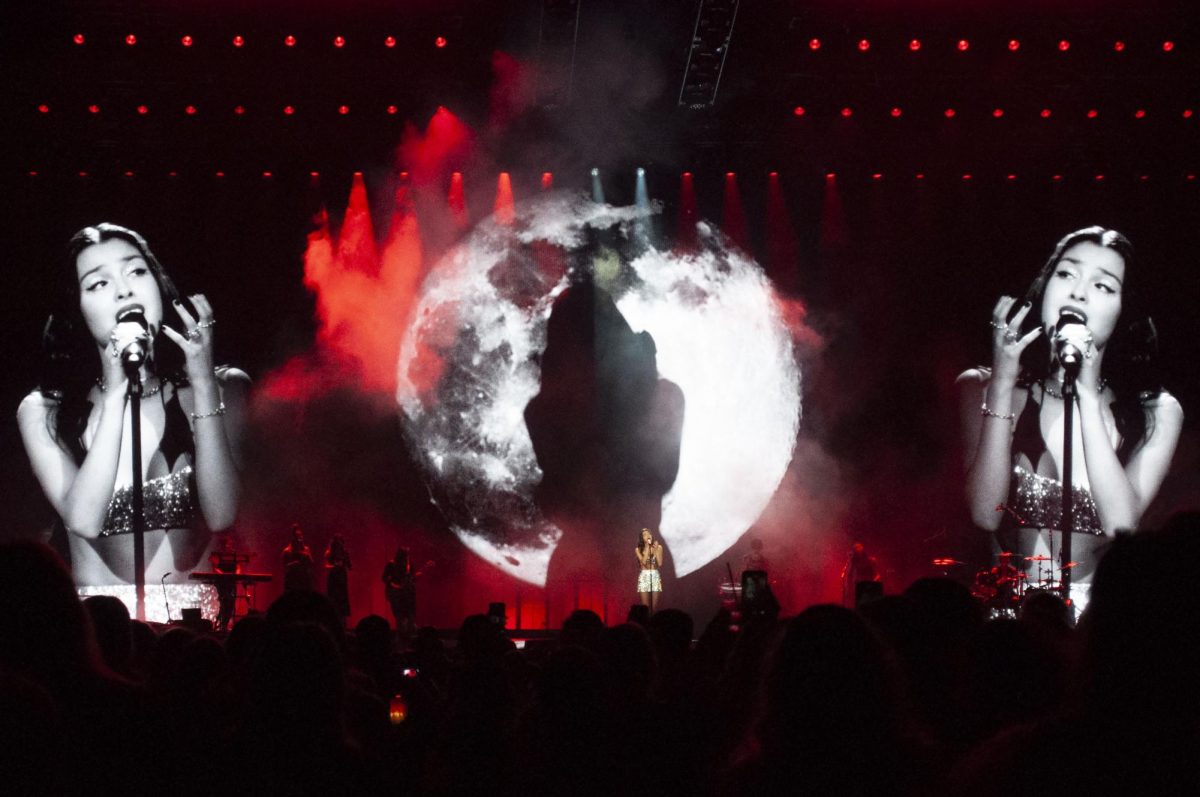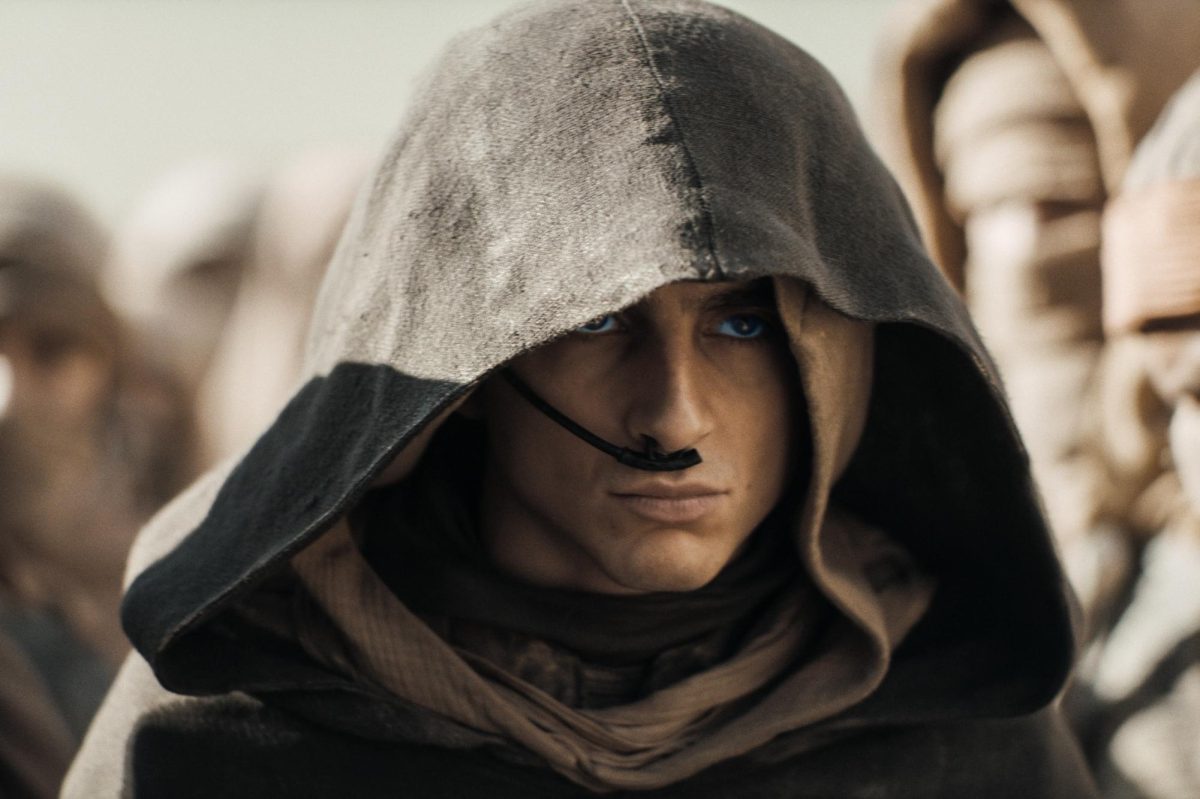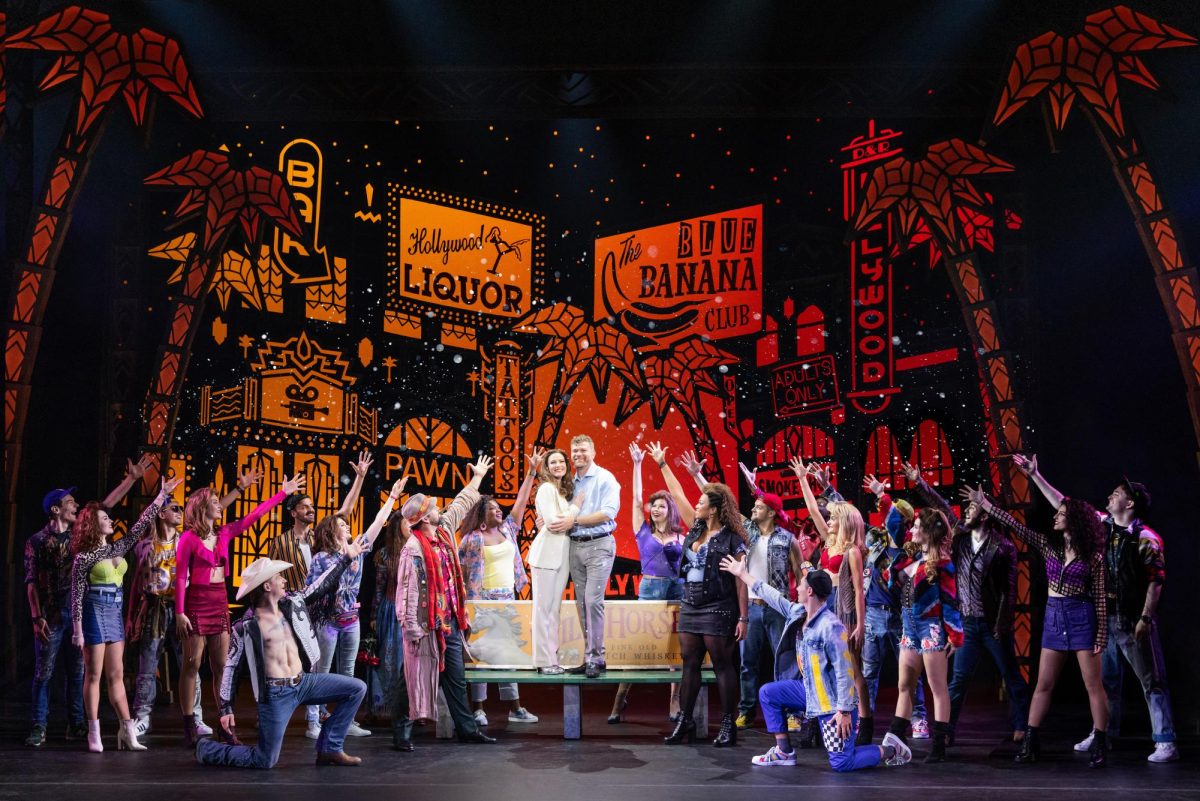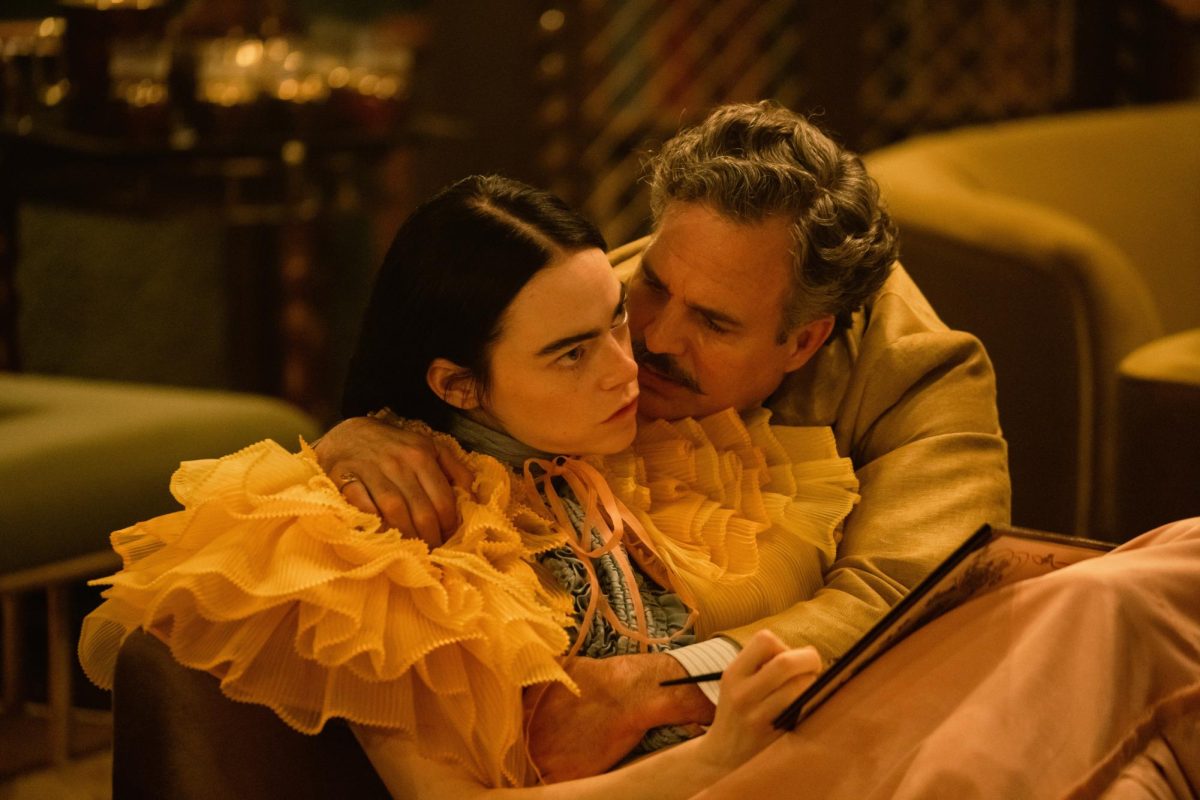By Riley Robinson, photo editor
If I could set my death to any score, it would be Sergei Prokofiev’s “Romeo and Juliet.” Unfortunately, it may not be as visually stunning as Boston Ballet’s performance of the star-crossed drama, choreographed by John Cranko. I lack a candlelit crypt, and a shaggy-haired Romeo so strung with grief that he would dance with my pointed-toe corpse. But here I digress: Prokofiev’s yearning, soaring score is still one you could curl up and cry in.
Unsurprisingly, Boston Ballet’s production at the Boston Opera House matched the music’s excellence. The company has performed Cranko’s version since 2008, but this is its first time using sets and costumes by Jürgen Rose, designed in 1968.
The scenery was sparse: A raised catwalk across the back of the stage was occasionally joined by an equally plain balcony or a leafier backdrop. Juliet’s bed was simply stripped to become part of the crypt. While elegant, it felt more like minimalism than sumptuous Italian Renaissance.
Rose’s jewel-toned costumes did help take up this empty space, however. It seemed nearly every character got to unfurl some glorious cape. Even the peasants had purple and yellow ribbons that whipped around during a vibrant street carnival in the second act. The corps showed off their one-handed cartwheels while dressed as harlequin jesters and gypsies with rock and roll crimped hair.
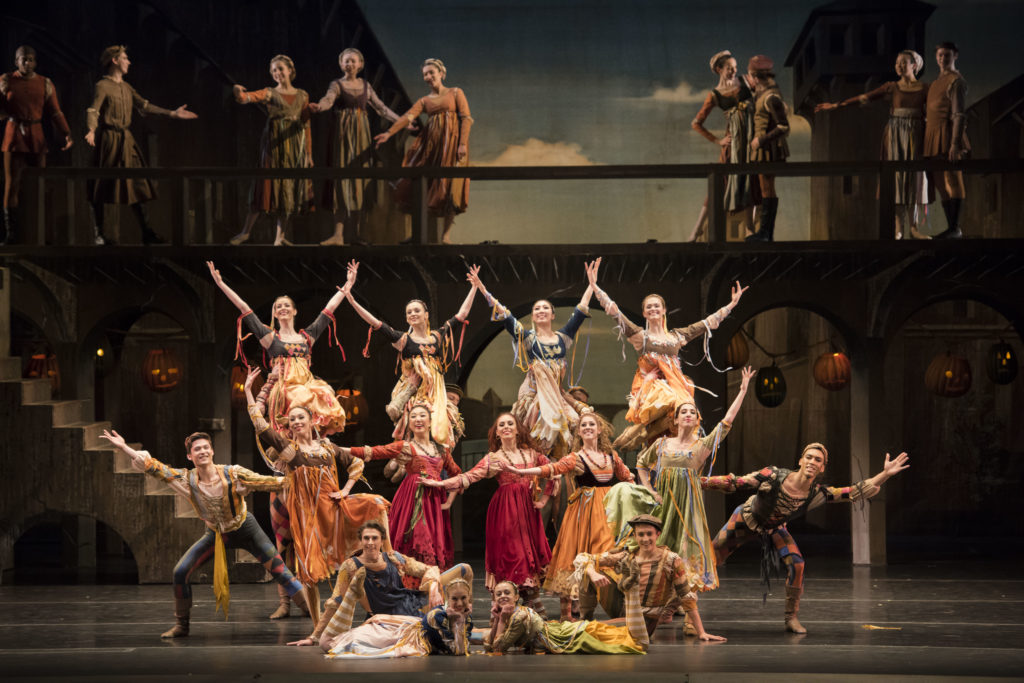
And yes, there was a carnival: Cranko did occasionally knead Shakespeare’s plot into a slightly different shape. For example, Romeo dies from a dagger to the stomach rather than poison. Fortunately, most of these changes served to show off the dancers. The Montague boys — Romeo, Mercutio and Benvolio — were the bold and unapologetic stars of the Capulet’s ball. I doubt anyone in the audience would complain, as the trio approached technical perfection. Every double tour stuck a satisfying landing in a crisp heel-to-toe fifth, even when they took off and landed multiple times in a row. The second act’s carnival was a chance for the corps to be more than just filler.
Obviously, creating a Romeo and Juliet ballet at all requires accepting some artistic changes (and believing an even faster “love at first sight”). Shakespeare’s Lord Capulet says to a cousin in Act I: “You and I are past our dancing days,” but that doesn’t seem to matter in Cranko’s staging.
There were plenty of other little moments tucked in as character development gems. Juliet grabbing her own breasts and looking at the audience in shock, realizing her transition to adulthood. Lady Capulet’s actual bodice-ripping grief over Paris’ death. Mercutio giving Romeo the classic nudge-nudge to go after Rosaline.
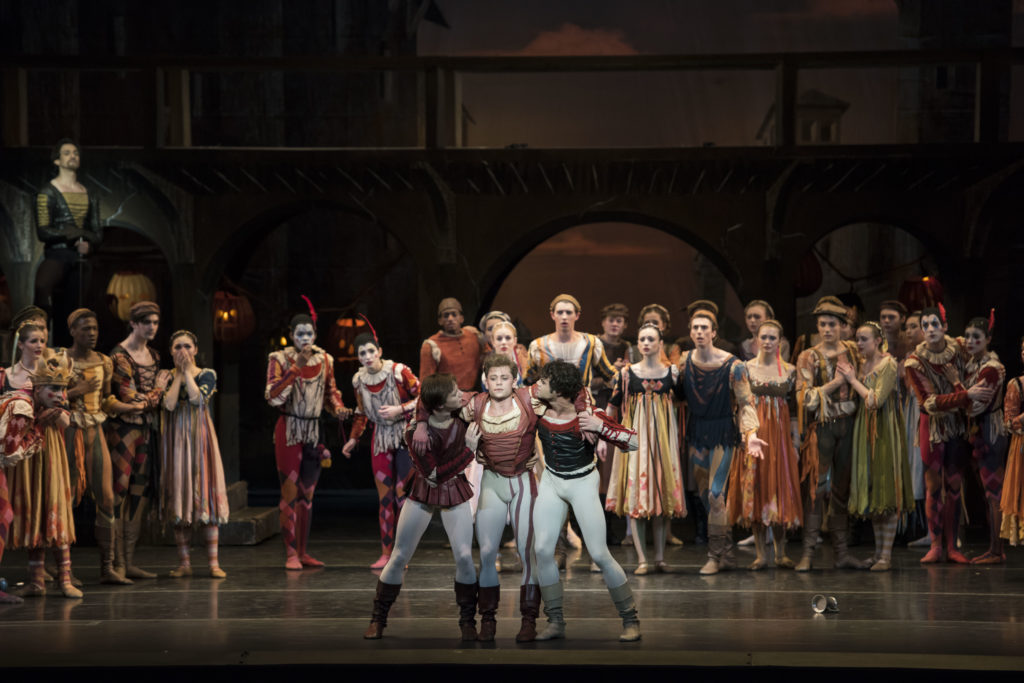
There was also the end of Mercutio’s virtuosic solo, where he paused to give the audience a coy “come hither” finger. Mercutio making out with another gypsy on stage left… Really, lots of Derek Dunn playing a great Mercutio. He was Verona’s frat boy stereotype, but you can’t help but smile at it. His snappy pirouettes and impeccable balance even elicited a loud “Bravo!” from the mezzanine. Dunn, a soloist, is surely one to watch for a promotion to principal rank.
Cranko also tampered with rules of classical ballet just as much as Shakespeare’s plot. Flexed feet! Somersaults and backflips! Legs not rotated flat like hieroglyphic drawings! The choreography, created in 1962, is from that glorious mid-air period when ballet jumped from its classical past to sharper, modernist movement. It feels more natural, more truly romantic than any “romantic era” ballet from the late 19th century.
This freedom of movement is what makes the balcony scene work: The scene known for “A rose by any other name…” is also the highlight of the ballet for its untempered elation. The melody that cues the pas de deux is an imposing, crashing, descending scale. It feels like the musical equivalent of driving a car off a cliff, so it needs bold abandon like Juliet’s sprint into a head-over-heels lift.
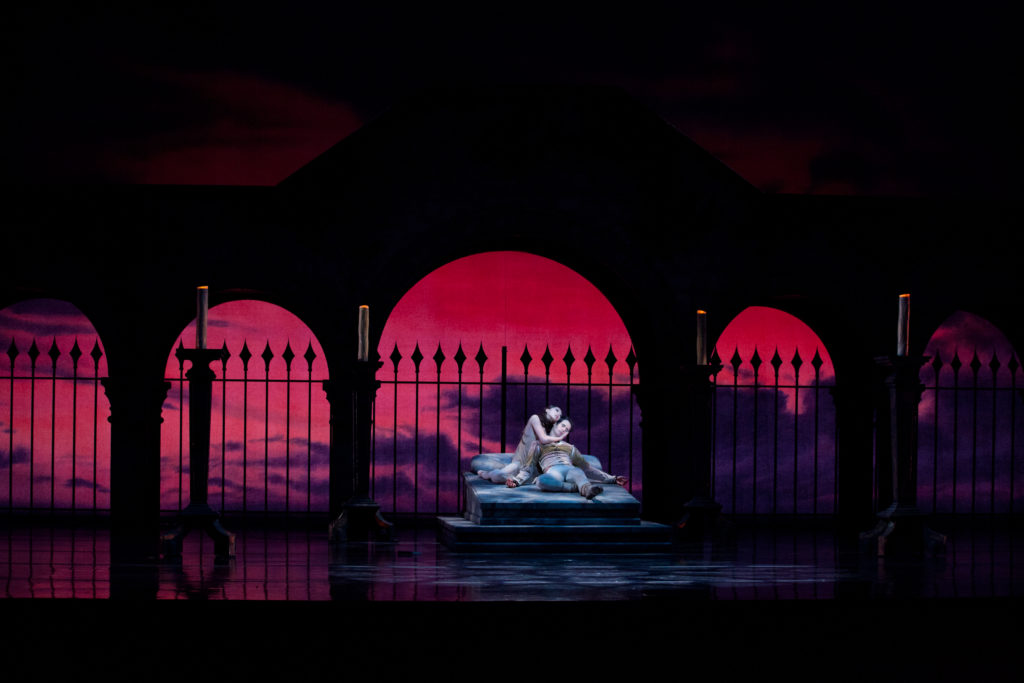
After all this beauty, I have only one problem with Juliet, danced by Misa Kuranaga. The audience needed more of her. Each time she commanded the stage alone, I hoped she would break into a phrase of movement, but every time it was only acting.
Kuranaga’s character was commendable, but her dancing is extraordinary. When she rolls through the balls of her feet to come off pointe, it is as if the Earth has to politely ask for her return. To only see her when she’s accompanied by a male partner seems a missed opportunity and an antiquated choice — even for a ‘60s adaptation of an Elizabethan play.
Romeo and Juliet runs until April 8. Regular tickets range $45-$159. Student subscription tickets are $25 per performance.


